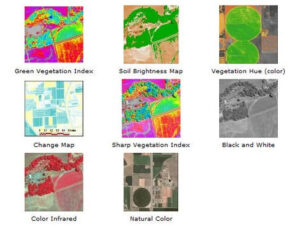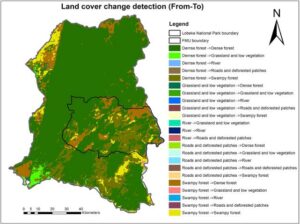Back to: ZOOLOGY 500 Level
Welcome to class!
Hello my ever-curious and determined scholar! It’s a great day to build knowledge that can change lives—starting with yours. Today’s topic is one of the most practical and future-relevant in the world of ecology and environmental science: Applications in Land Use and Habitat Change Detection. This is where science meets action, and you get to use real data to protect real spaces—forests, wetlands, savannahs, and more!
Applications In Land Use And Habitat Change Detection
Understanding Land Use and Habitat Change
Let’s start with something simple. Land use refers to how humans make use of land—for farming, housing, industries, roads, conservation, etc. On the other hand, habitat change happens when the natural environments where plants and animals live are altered—by nature or by human activity.

For instance, if a thick forest in Edo State is cleared to build estates, that’s a land use change and also a habitat loss for many species. The more we can detect these changes early, the better our chances of managing them responsibly.
Why Detecting These Changes Matters
Conservation: Detecting deforestation, poaching zones, or illegal mining areas early helps protect endangered species.
Planning: Town planners use land use data to decide where to build without destroying vital ecosystems.
Disaster response: Monitoring changes helps respond to floods, erosion, or desertification.
Climate action: Understanding how land is changing helps measure carbon loss and greenhouse gas emissions.
Tools Used in Change Detection
Thanks to technology, we don’t have to rely only on physical surveys. Some powerful tools include:
Remote sensing: Using satellites or drones to observe large areas over time.
GIS (Geographic Information System): Helps analyse, compare, and map changes digitally.
Aerial photography: Planes or drones taking photos of land for comparison over months or years.
Historical data analysis: Comparing maps and satellite images from different time periods.
Examples from Nigeria
In the Jos Plateau, scientists use satellite imagery to track how farming has encroached on grasslands, affecting species like the rock firefinch.

In Lagos, urban expansion is monitored using GIS to understand how wetlands are shrinking due to building developments.
In the Niger Delta, oil pollution and mangrove loss are tracked with satellite data to assess environmental impact.
How You Can Use This as a Zoologist
As a zoology student, understanding land use change helps you:
Predict which species are at risk
Propose suitable areas for wildlife reserves
Work with policymakers to design eco-friendly development
Collaborate with urban planners, climate scientists, and conservationists
You could one day help design sustainable land plans that protect both people and animals.
Challenges in Monitoring Changes
Cloud cover can affect image quality in tropical areas
Data may be expensive or unavailable in some regions
Technical skills are needed to interpret satellite or GIS data correctly

But the good news? With practice and tools like Google Earth, QGIS, and even your smartphone, you can build these skills right from now!
Summary
- Land use refers to how humans utilise land; habitat change is how environments are altered.
- Detecting changes is key for conservation, planning, climate monitoring, and biodiversity protection.
- Tools like GIS, remote sensing, and drones are used for this purpose.
- In Nigeria, these techniques are helping solve real ecological challenges.
- As a zoologist, these skills are crucial for protecting species and guiding sustainable development.
Evaluation
- What is the difference between land use and habitat change?
- Mention two tools used in detecting land and habitat changes.
- Give one example of land use change in Nigeria and how it affects biodiversity.
- Why is it important for a zoologist to understand habitat change detection?
You’re not just learning science—you’re learning to be a voice for the voiceless habitats and species of Africa. Keep asking questions, keep observing your world, and keep growing your skills. The environment needs you—and with Afrilearn by your side, there’s no limit to how far you can go!
